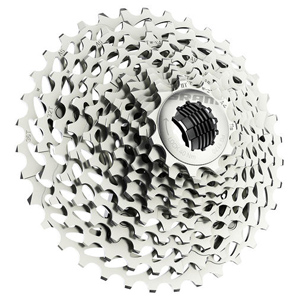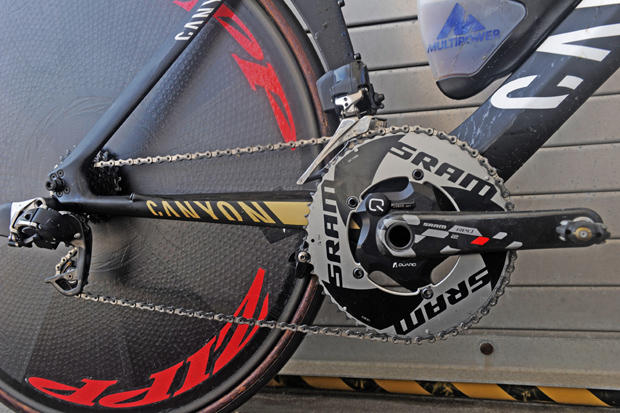SRAM’s eTap Wireless Electronic
In one of the most anticipated launches – and least well-kept secrets – in recent cycling history, SRAM made public its eTap groupkit.
It's no secret that SRAM has been working on a wireless electronic group set, and pictures have already been posted on Slowtwitch.
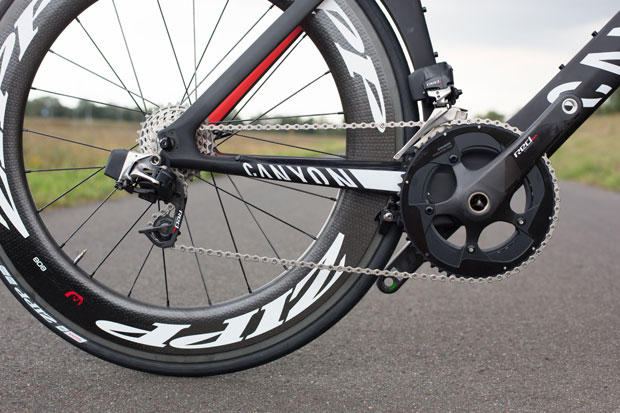
The current production model, compatible with all SRAM 22 cranksets, chainrings, chains, and mechanical brakes, has been in use since January 2015 and was used by Jan Frodeno to win Oceanside, the AG2R team in the Tour de France, and many others. Last week I had the opportunity to ride this groupset over three days (150+ miles) at SRAM's factory in Schweinfurt, Germany (the old Sachs headquarters, before SRAM's acquisition of that venerable German brand).
Since the set-up on the bike I'm currently riding includes Shimano Dura-Ace Di2, I hope the performance and feature comparisons to Di2 below can be considered fair.
Installation
I (along with other editors from bike publications) was welcomed with SRAM eTap pre-built road bikes along with presentations on eTap, including the ease of installation. It seemed straightforward but I wanted to experience it for myself.
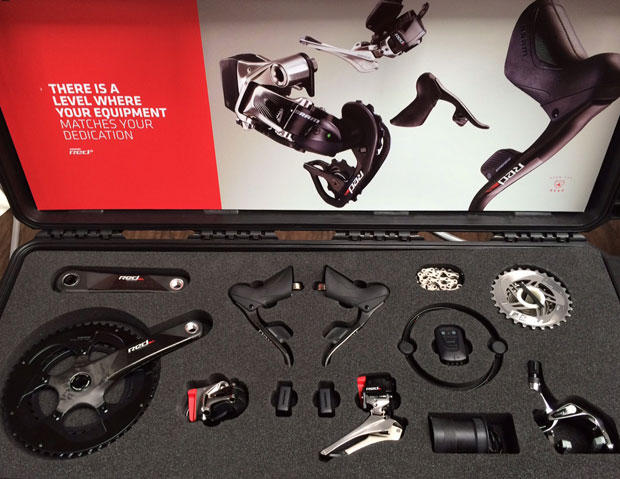
I grabbed an aero groupset and a Canyon Speedmax with only a crank and bars installed, and slapped it in a bike stand. Go! In under six minutes, a rear derailleur, front derailleur, blipbox (i.e., junction box) and 4 blips (i.e., shifters) were all installed, paired, and micro adjusted for optimized shifting. This is about the same time it took me to figure out the best way install my internal battery on my current bike.
The physical installation of the derailleurs is the same as on any other groupset. The blips (shifters) are much more versatile, as they consist of a single button and can be placed anywhere along the bars. The blips do have wires that attach the to the blipbox, which is the power source and brains for the shifting. It is a bit larger in dimension that the Shimano 5-port junction box. It also has a Garmin mount on the rear.
AIREA
At the heart of SRAM eTap is its personal area network (PAN) referred to as AIREA. It is a wireless system using 128-bit encryption with rotating encryption codes that transmits and receives data, including shifts, using a proprietary wireless protocol. It also only allows for pairing of 1 set of shifters and a blipbox to prevent accidental shifts by other units. AIREA has a range of transmission of 100 meters.
AIREA was developed by computer consultants, engineers, and "hackers." It was tested for hacking, interference, and even the use of jammers. If the system was hacked once, it may result in a missed shift but then the code changes again and access needs to be re-granted, so shifting again would work. I spent a great deal of time discussing this aspect of the groupset. I have come to the conclusion the hacking objection is a red herring. Banks and iPhones use 128 bit encryption, and they are much more likely to get hacked than a groupset on a bike.
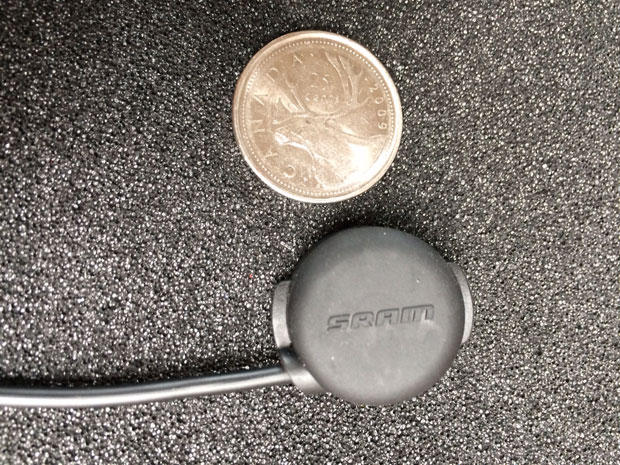
SRAM also uses AIREA to upgrade the firmware of eTap via a USB stick that works on both Mac and PC.
Derailleurs
There are no significant changes to the mechanical function of the front and rear derailleurs compared to SRAM's Red 22 wired versions. It's just that they're wireless and they transmit data via Ant+. Each have interchangeable batteries, which attach to the rear of each derailleur with a latch hook. Each derailleur has an indicator light used during the initial pairing and that indicates battery strength.
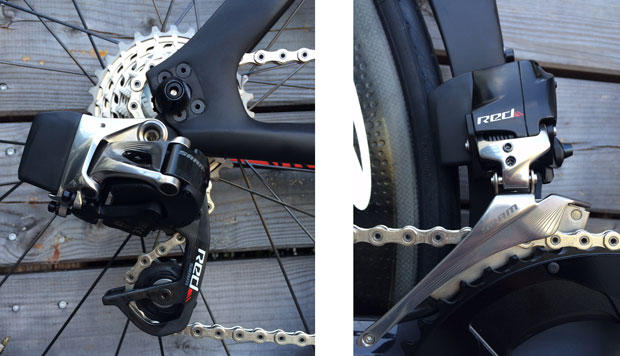
The derailleurs have built-in accelerometers that put the system to sleep when idle for 30 seconds, or wake the system upon sensing movement. The rear derailleur acts as the master controller for the entire system and all components are paired with this component only. The derailleurs also have a function button used for pairing, and to micro-adjust shifting. The ability to transmit data via Ant+ means information like gear ratios can be sent to devices such as a Garmin, a feature SRAM is finalizing. I was able to see a test unit during one my rides. In effect, it replaces the Shimano D-Fly with no additional cost.
Currently, the system works with cassettes up to 11-28, but it's not 1x compatible yet. It will require a hardware, not simply a firmware, update to work for 1x or with cassettes with a greater range.
Blip Shifters and Blip Box
For triathlon and TT bikes, a shift is executed using a remote shifter called a blip (the coin-sized thing in the image above). Blips measure 2cm in diameter and are connected to the blipbox via a wire, which can be from 150mm to 650mm in length. These are plugged into ports which determine whether you shift up or down, so in a sense they are programmable. Unlike traditional aero and brake shifters, blips can be placed anywhere.
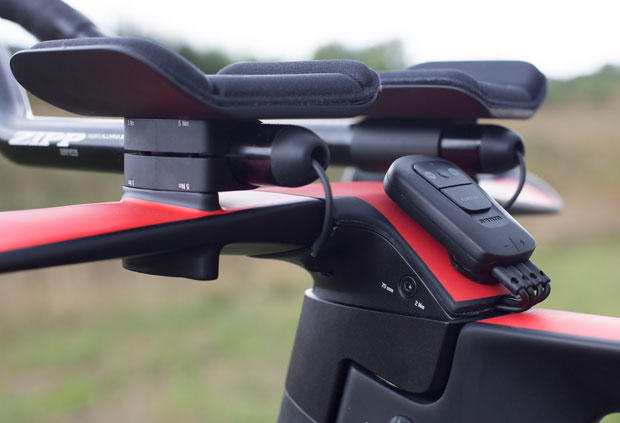
To be clear, any talking of blips and a junction box is only for Tri and TT. Road controls do not require a junction box or blips. You can add blips to a road bike outfitted with road controls and you don't need a junction box. There are two ports in the road controls for blips that can be positioned on extension ends, the tops or on the drops. In the image below one of the ports is populated with a blip wire.
A pair of blip ports are on each road control. It is possible using this set up, which I tested, to run a set of blips on the road bars and set of blips on clip-on aero extensions. This is a performance advantage for ITU Olympic-style racers.
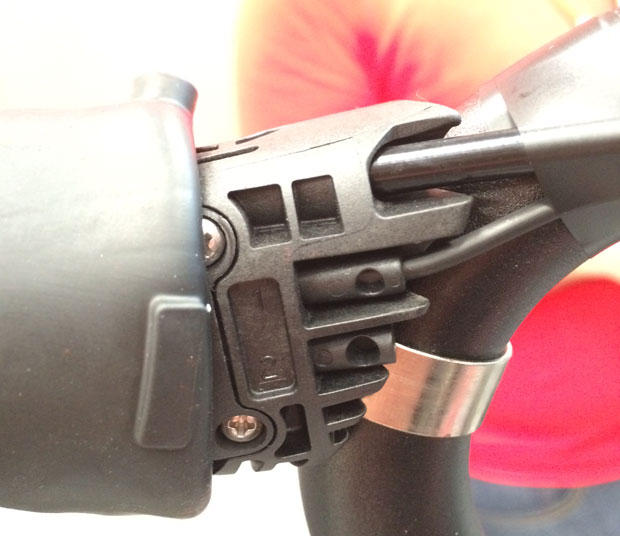
The blipbox is necessary for Tri and TT. It acts as the hub for blips. It has a function button that allows for micro-shifting in 0.2mm increments and a light to indicate battery strength and pairing, and it communicates with the derailleurs. The blipbox operates on a single CR2032 battery with a claimed lifespan of 2 years, and with a Garmin mount on the rear.
Battery and Charger
The front and rear derailleurs each house a battery securely fastened via a latch flap, and it held up on perfectly on cobbled roads. These are 7.4V lithium ion polymer batteries with a capacity of 300Ah (milli Amp hours). The advantages to these batteries are that they are interchangeable, light (24 grams), and removable for charging (no need to bring my bike into the house to charge).
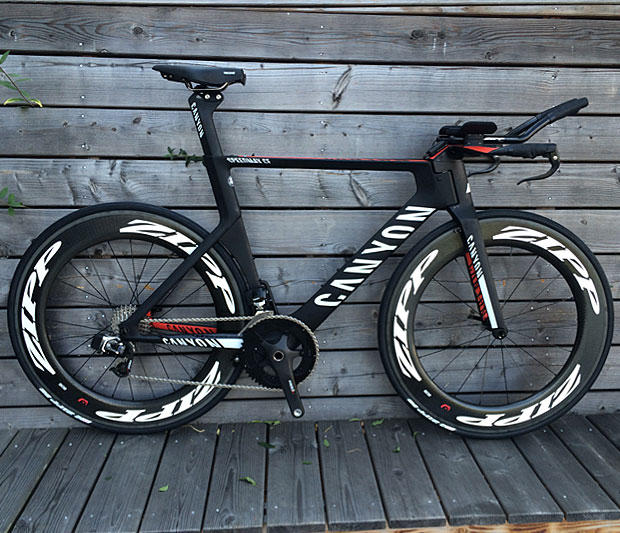
SRAM states the batteries are good for over 1000kms with a charge time of 45 minutes. When a battery dies on a component, that component stops working. Each powered component has an indicator light that provides a guideline for time remaining. The ability to carry a spare battery and replace on the go is a nice feature. Also, SRAM is working with Garmin to have a screen option that shows battery status on each component.
Shifting
The eTap shifting was inspired by the paddle shifting used in race cars: right shifter up-shifts, left shifter downshifts, and both at the same time shifts the front derailleur. This change was intuitive, and it felt natural immediately. I found the overall shifting to be slightly different from Di2, and in some ways better.
I found the eTap to change gears slightly slower than Di2 and the blips to required slightly more pressure to change the gear. These subtle differences were not good or bad, just different. My sense is that the eTap shifts are smoother than Di2's shifts. The best way to describe the difference in overall shifting is that Di2 seems to jump from cog to cog whereas eTap glides to the next gear.
Testing
All the components within the eTap system have been tested to meet IP67, which equates to being submerged in 1 meter of water for over 30 minutes and safe from dust entering the system, both industry standards or higher. They were also subjected to thermal tests (-10 C to 40 C), humidity tests, thermal shock (hot temperature to immediate cold temperature), along with in-house testing that included impact tests, electronic testing, and over 750,000km of field testing over the past five years. The most recent recall on SRAM hydraulic brakes is still fresh and they are not looking for a repeat with eTap.
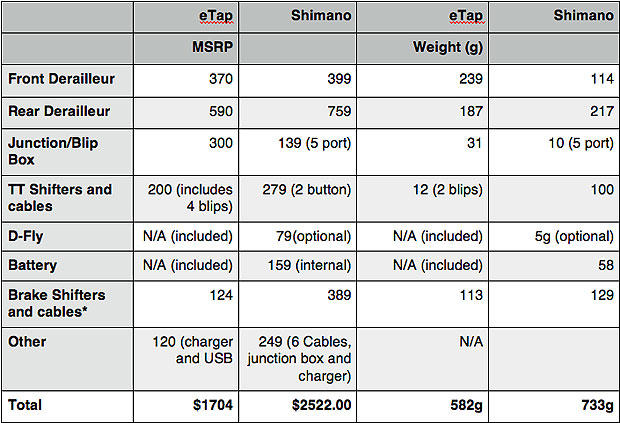
Note: Prices and weights based on specifications provided by companies where available. Di2 pricing can be found cheaper than MSRP.
*I added only the cost/weight of SRAM aero 900 brake levers and weight of 2 blips.
Final Thoughts
I was impressed! Coming from a Di2 background, I would have no hesitation making the switch when it is released in the Spring of 2016. The pricing is competitive, it's light, simple, and it shifts better under heavy torque. I also suspect this is just the beginning. The eTap line will certainly expand and new products will be developed around this platform.
Also, the affect of wireless shifting on the construction of future aero bikes will be interesting. Eliminating the need for holes, or a means to conceal wires to derailleurs, may open up creativity in bike design, a fact not lost on SRAM.


